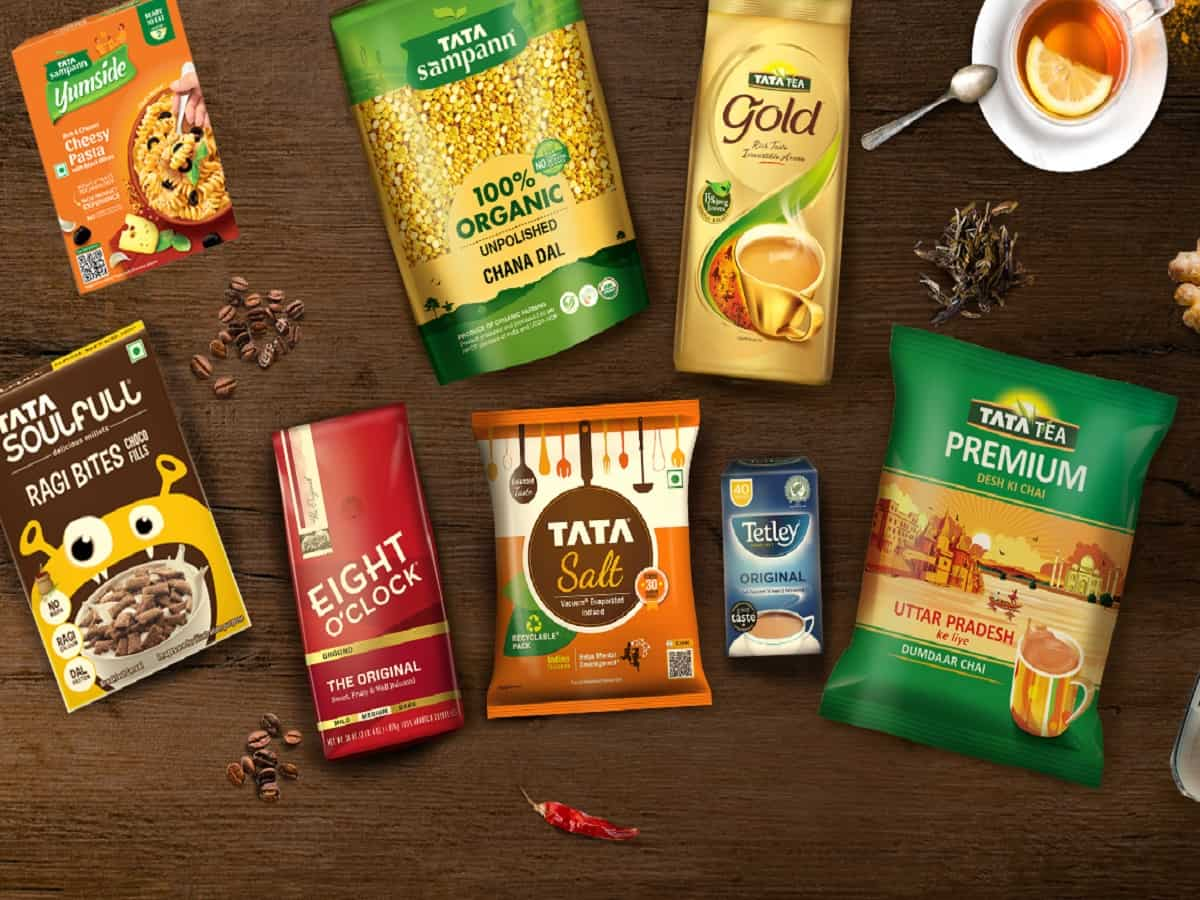Tata Consumer Amplifies Tea and Salt Strategies Amid Rising Competition in 2023
The firm relies on a distribution push in semi-urban and rural areas and increased promotional spending behind its products, mainly tea, to stem this decline. Putting “margins before market share” will be the approach in the salt industry.
As the level of competition, particularly from small companies, rises, the fast-moving consumer goods (FMCG) division of the Tata Group will concentrate on expanding its market share in the categories of salt and tea, two of its essential products. With its brand of salt, Tata Consumer Products is the market leader.
With its brand of tea, Tata Consumer Products is the second-largest participant. Hindustan Unilever is in first place in the branded tea market. However, as commodity inflation moderates, more small players enter the market, helping essentials like salt and tea revive.

These businesses primarily target rural and semi-urban areas, where consumers are price-conscious and prone to switching brands. The value share decreased by around 30 basis points in the first quarter compared to the prior year. To stop this decline, the firm relies on a distribution drive in semi-urban and rural areas and increased promotional spending behind its brands, mainly tea. “Margins before market share” will be the approach in the salt industry.
To combat inflationary pressures, Tata Consumer raised the price of Tata Salt by 33%, or from Rs 21 to Rs 28 per box, during the past three quarters. D’Souza stated that this resulted in a decline in market share.” If you thoroughly examine the salt industry, we have increased our market share in the Tata Salt brand by ten bbs. However, the area of the portfolio that is vulnerable to small and regional businesses is where we have lost market share. Now that total margins are stabilized with the price increase, they will focus on regaining share in this portfolio area, according to D’Souza.
Additionally, the corporation will strengthen its position in the south concerning tea, coffee, salt, and spices. According to D’Souza, Tata Consumer’s Chakra Gold and Kanan Devan brands, for example, have succeeded in the south. Tata Coffee Grand was also relaunched with a fresh box design. The corporation has also introduced Shuddh in the salt category for the southern markets. Additionally, it sells a variety of spices under the Tata Sampann brand for the south of the area.

D’Souza said that the firm had adopted a targeted distribution strategy by expanding bandwidth at the front end and dividing the routes of salespeople in places with a population of more than a million. In comparison, some of these salespeople concentrate on the firm’s core categories, such as tea, coffee, and salt. In contrast, others focus on classes and items with value-added features (like Tata Soulfull). According to D’Souza, the total reach will reach four million outlets by September, twice as many as three years ago.
India’s consumer goods landscape is becoming increasingly dynamic as competition heightens. One of the country’s key players, Tata Consumer Products, has been making strategic moves to strengthen its foothold in the market. With competition rapidly intensifying, the firm is stepping up its game in two core segments – tea and salt.
Tata Consumer Products, the world’s second-largest tea company, is charting a proactive course to secure its position in the tea market. With renowned brands like Tetley and Tata Tea, the company is leveraging its vast tea portfolio to solidify its market share.

Tata Consumer is now focusing on innovation and customization to combat the challenge of a saturated domestic market and escalating competition. The company branches from traditional black tea into new categories such as herbal, green, and speciality teas. The aim is to tap into the growing health and wellness trend that has surged among consumers during the COVID-19 pandemic and beyond.
Moreover, Tata Consumer is also revamping its marketing strategy. The company is significantly increasing its digital and social media presence, capitalizing on the growing internet penetration in India. Tata Consumer aims to enhance brand visibility and consumer engagement through targeted campaigns and influencer marketing.
Tata Consumer’s journey in the salt segment has been remarkable. With Tata Salt, it commands a significant share of the branded salt market in India. However, the rising competition from local and regional brands has compelled the company to rethink its strategy.
Tata Consumer is expanding its salt portfolio beyond iodized variants in response to this challenge. The company has focused on offering unique products such as low-sodium salt, rock salt, and sea salt to appeal to a broader range of consumers and their health and culinary needs.

Additionally, the company is investing in advanced supply chain management to streamline distribution, especially in rural areas. As these areas become more accessible due to infrastructure development, reaching out to these untapped markets can significantly boost Tata’s market share in the salt segment.
The company also aims to enhance its direct-to-consumer (DTC) channels. With the ongoing digital transformation in India, e-commerce has become a powerful retail tool. By improving its DTC channels, Tata Consumer can enhance customer reach and retention while gaining valuable insights into consumer behaviour for future product development.
In the face of stiff competition, Tata Consumer’s decisions to strengthen its tea and salt strategies underline its commitment to innovation and customization. Understanding the shifting consumer trends towards healthier options and convenient shopping, Tata Consumer is poised to maintain its market dominance.
However, the journey is challenging. To remain competitive, Tata Consumer must continually assess the market dynamics, adapt to consumer preferences, and leverage digital transformations.

2023 marks a crucial phase for Tata Consumer Products as it gears up to reinforce its position in the tea and salt markets. With a keen focus on diversification, digitalization, and direct consumer reach, the company seems well-equipped to navigate the rising tide of competition in the Indian consumer goods landscape.
